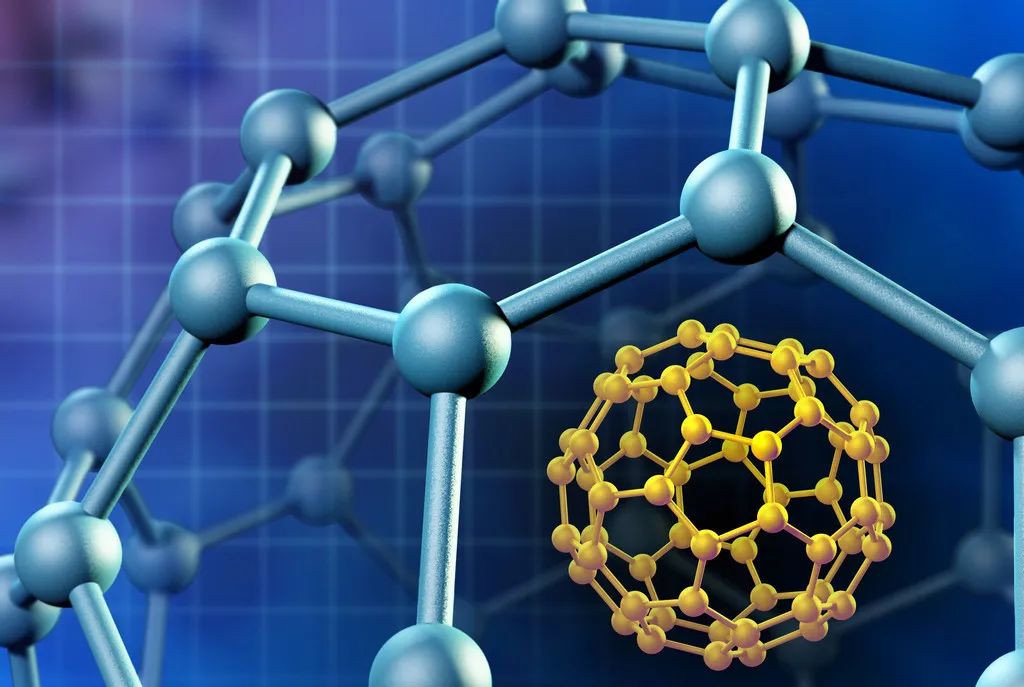Rare earth nanomaterials Rare earth elements have unique 4f sub layer electronic structure, large atomic magnetic moment, strong spin orbit coupling and other characteristics, resulting in very rich optical, electrical, magnetic and other properties. They are indispensable strategic materials for countries around the world to transform traditional industries and develop high-tech, and are known as the "treasure house of new materials".
In addition to its applications in traditional fields such as metallurgical machinery, petrochemicals, glass ceramics, and light textiles, rare earths are also key supporting materials in emerging fields such as clean energy, large vehicles, new energy vehicles, semiconductor lighting, and new displays, closely related to human life.
After decades of development, the focus of rare earth related research has correspondingly shifted from the smelting and separation of single high-purity rare earths to the high-tech applications of rare earths in magnetism, optics, electricity, energy storage, catalysis, biomedicine, and other fields. On the one hand, there is a greater trend towards rare earth composite materials in the material system; On the other hand, it is more focused on low dimensional functional crystal materials in terms of morphology. Especially with the development of modern nanoscience, combining the small size effects, quantum effects, surface effects, and interface effects of nanomaterials with the unique electronic layer structure characteristics of rare earth elements, rare earth nanomaterials exhibit many novel properties different from traditional materials, maximizing the excellent performance of rare earth materials, And further expand its application in the fields of traditional materials and new high-tech manufacturing.
At present, there are mainly the following highly promising rare earth nanomaterials, namely rare earth nano luminescent materials, rare earth nano catalytic materials, rare earth nano magnetic materials, nano cerium oxide ultraviolet shielding materials, and other nano functional materials.
No.1 Rare earth nano luminescent materials
01. Rare earth organic-inorganic hybrid luminescent nanomaterials
Composite materials combine different functional units at the molecular level to achieve complementary and optimized functions. Organic inorganic hybrid material have the functions of organic and inorganic components, showing good mechanical stability, flexibility, thermal stability and excellent processability.
Rare earth complexes have many advantages, such as high color purity, long life of excited state, high quantum yield, and rich emission spectrum lines. They are widely used in many fields, such as display, optical waveguide amplification, solid-state lasers, biomarker, and anti-counterfeiting. However, the low photothermal stability and poor processability of rare earth complexes seriously hinder their application and promotion. Combining rare earth complexes with inorganic matrices with good mechanical properties and stability is an effective way to improve the luminescent properties of rare earth complexes.
Since the development of rare earth organic inorganic hybrid material, their development trends show the following characteristics:
① The hybrid material obtained by chemical doping method has stable active components, high doping amount and uniform distribution of components;
② Transforming from single functional materials to multifunctional materials, developing multifunctional materials to make their applications more extensive;
③ The matrix is diverse, from primarily silica to various substrates such as titanium dioxide, organic polymers, clays, and ionic liquids.
02. White LED rare earth luminescent material
Compared with existing lighting technologies, semiconductor lighting products such as light-emitting diodes (LEDs) have advantages such as long service life, low energy consumption, high luminous efficiency, mercury free, UV free, and stable operation. They are considered the "fourth generation light source" after incandescent lamps, fluorescent lamps, and high-strength gas discharge lamps (HIDs).
White LED is composed of chips, substrates, phosphors, and drivers. Rare earth fluorescent powder plays a crucial role in the performance of white LED. In recent years, a large amount of research work has been carried out on white LED phosphors and excellent progress has been made:
① The development of a new type of phosphor excited by blue LED (460m) has carried out doping and modification research on YAO2Ce (YAG: Ce) used in blue LED chips to improve light efficiency and color rendering;
② The development of new fluorescent powders excited by ultraviolet light (400m) or ultraviolet light (360mm) has systematically studied the composition, structure, and spectral characteristics of red and green blue fluorescent powders, as well as the different ratios of the three fluorescent powders to obtain white LED with different color temperatures;
③ Further work has been carried out on the basic scientific issues in the preparation process of fluorescent powder, such as the influence of the preparation process on the flux, to ensure the quality and stability of the fluorescent powder.
In addition, white light LED mainly adopts a mixed packaging process of fluorescent powder and silicone. Due to the poor thermal conductivity of fluorescent powder, the device will heat up due to prolonged working time, leading to silicone aging and shortening the device's service life. This problem is particularly serious in high-power white light LEDs. Remote packaging is one way to solve this problem by attaching fluorescent powder to the substrate and separating it from the blue LED light source, thereby reducing the impact of heat generated by the chip on the luminescent performance of the fluorescent powder. If rare earth fluorescent ceramics have the characteristics of high thermal conductivity, high corrosion resistance, high stability, and excellent optical output performance, they can better meet the application requirements of high-power white LED with high energy density. Micro nano powders with high sintering activity and high dispersion have become an important prerequisite for the preparation of high transparency rare earth optical functional ceramics with high optical output performance.
03.Rare earth upconversion luminescent nanomaterials
Upconversion luminescence is a special type of luminescence process characterized by the absorption of multiple low-energy photons by luminescent materials and the generation of high-energy photon emission. Compared with traditional organic dye molecules or quantum dots, rare earth upconversion luminescent nanomaterials have many advantages such as large anti Stokes shift, narrow emission band, good stability, low toxicity, high tissue penetration depth, and low spontaneous fluorescence interference. They have broad application prospects in the biomedical field.
In recent years, rare earth upconversion luminescent nanomaterials have made significant progress in synthesis, surface modification, surface functionalization, and biomedical applications. People improve the luminescence performance of materials by optimizing their composition, phase state, size, etc. at the nanoscale, and combining the core/shell structure to reduce the luminescence quenching center, in order to increase the transition probability. By chemical modification, establish technologies with good biocompatibility to reduce toxicity, and develop imaging methods for upconversion luminescent living cells and in vivo; Develop efficient and safe biological coupling methods based on the needs of different applications (immune detection cells, in vivo fluorescence imaging, photodynamic therapy, photothermal therapy, photo controlled release drugs, etc.).
This study has enormous application potential and economic benefits, and has important scientific significance for the development of nanomedicine, the promotion of human health, and social progress.
No.2 Rare earth nano magnetic materials
Rare earth permanent magnet materials have gone through three development stages: SmCo5, Sm2Co7, and Nd2Fe14B. As a fast quenched NdFeB magnetic powder for bonded permanent magnet materials, the grain size ranges from 20nm to 50nm, making it a typical nanocrystalline rare earth permanent magnet material.
Rare earth nanomagnetic materials have the characteristics of small size, single domain structure, and high coercivity. The use of magnetic recording materials can improve signal-to-noise ratio and image quality. Due to its small size and high reliability, its use in micro motor systems is an important direction for the development of the new generation of aviation, aerospace, and marine motors. For magnetic memory, magnetic fluid, Giant Magneto Resistance materials, the performance can be greatly improved, making devices become high-performance and miniaturized.
No.3 Rare earth nano catalytic materials
Rare earth catalytic materials involve almost all catalytic reactions. Due to surface effects, volume effects, and quantum size effects, rare earth nanotechnology has increasingly attracted attention. In many chemical reactions, rare earth catalysts are used. If rare earth nanocatalysts are used, the catalytic activity and efficiency will be greatly improved.
Rare earth nanocatalysts are generally used in petroleum catalytic cracking and purification treatment of automotive exhaust. The most commonly used rare earth nanocatalytic materials are CeO2 and La2O3, which can be used as catalysts and promoters, as well as catalyst carriers.
No.4 Nano cerium oxide ultraviolet shielding material
Nano cerium oxide is known as the third generation ultraviolet isolation agent, with good isolation effect and high transmittance. In cosmetics, low catalytic activity nano ceria must be used as a UV isolating agent. Therefore, the market attention and recognition of nano cerium oxide ultraviolet shielding materials are high. The continuous improvement of integrated circuit integration requires new materials for integrated circuit chip manufacturing processes. New materials have higher requirements for polishing fluids, and semiconductor rare earth polishing fluids need to meet this requirement, with faster polishing speed and less polishing volume. Nano rare earth polishing materials have a broad market.
The significant increase in car ownership has caused serious air pollution, and the installation of car exhaust purification catalysts is the most effective way to control exhaust pollution. Nano cerium zirconium composite oxides play an important role in improving the quality of tail gas purification.
No.5 Other nano functional materials
01. Rare earth nano ceramic materials
Nano ceramic powder can significantly reduce the sintering temperature, which is 200 ℃~300 ℃ lower than that of non nano ceramic powder with the same composition. Adding nano CeO2 to ceramics can reduce sintering temperature, inhibit lattice growth, and improve the density of ceramics. Adding rare earth elements such as Y2O3, CeO2, or La2O3 to ZrO2 can prevent high-temperature phase transformation and embrittlement of ZrO2, and obtain ZrO2 phase transformation toughened ceramic structural materials.
Electronic ceramics (electronic sensors, PTC materials, microwave materials, capacitors, thermistors, etc.) prepared using ultrafine or nanoscale CeO2, Y2O3, Nd2O3, Sm2O3, etc. have improved electrical, thermal, and stability properties.
Adding rare earth activated photocatalytic composite materials to the glaze formula can prepare rare earth antibacterial ceramics.
02.Rare earth nano thin film materials
With the development of science and technology, the performance requirements for products are becoming increasingly stringent, requiring ultra-fine, ultra-thin, ultra-high density, and ultra-filling of products. Currently, there are three major categories of rare earth nano films developed: rare earth complex nano films, rare earth oxide nano films, and rare earth nano alloy films. Rare earth nano films also play important roles in the information industry, catalysis, energy, transportation, and life medicine.
Conclusion
China is a major country in rare earth resources. The development and application of rare earth nanomaterials is a new way to effectively utilize rare earth resources. In order to expand the application scope of rare earth and promote the development of new functional materials, a new theoretical system should be established in materials theory to meet the research needs at the nanoscale, make rare earth nanomaterials have better performance, and make the emergence of new properties and functions possible.
Post time: May-29-2023


